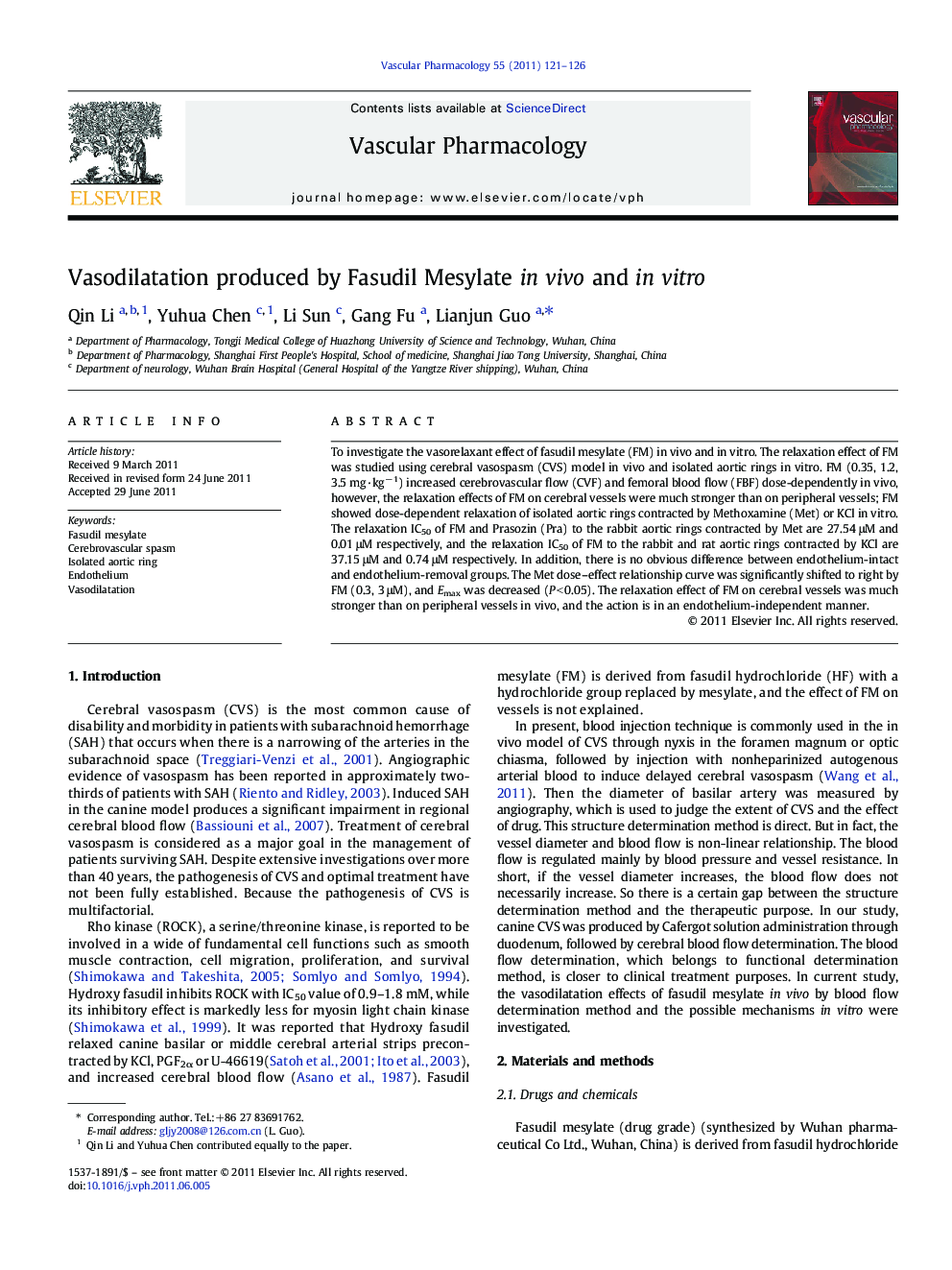| Article ID | Journal | Published Year | Pages | File Type |
|---|---|---|---|---|
| 5847595 | Vascular Pharmacology | 2011 | 6 Pages |
To investigate the vasorelaxant effect of fasudil mesylate (FM) in vivo and in vitro. The relaxation effect of FM was studied using cerebral vasospasm (CVS) model in vivo and isolated aortic rings in vitro. FM (0.35, 1.2, 3.5 mg·kgâ1) increased cerebrovascular flow (CVF) and femoral blood flow (FBF) dose-dependently in vivo, however, the relaxation effects of FM on cerebral vessels were much stronger than on peripheral vessels; FM showed dose-dependent relaxation of isolated aortic rings contracted by Methoxamine (Met) or KCl in vitro. The relaxation IC50 of FM and Prasozin (Pra) to the rabbit aortic rings contracted by Met are 27.54 μM and 0.01 μM respectively, and the relaxation IC50 of FM to the rabbit and rat aortic rings contracted by KCl are 37.15 μM and 0.74 μM respectively. In addition, there is no obvious difference between endothelium-intact and endothelium-removal groups. The Met dose-effect relationship curve was significantly shifted to right by FM (0.3, 3 μM), and Emax was decreased (P < 0.05). The relaxation effect of FM on cerebral vessels was much stronger than on peripheral vessels in vivo, and the action is in an endothelium-independent manner.
Graphical abstractThe relaxation effects of FM on cerebral vessels were much stronger than on peripheral vessels.Download high-res image (76KB)Download full-size image
